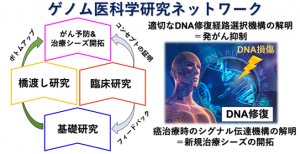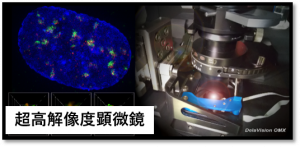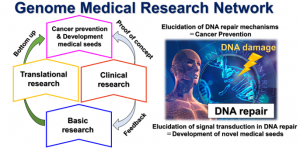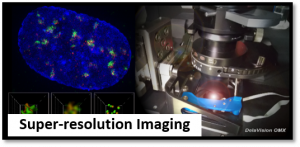DNA修復反応を中心としたゲノム医科学ネットワークの確立による発がんメカニズムの統合的理解と新たながん医療シーズの開拓
群馬大学未来先端研究機構
准教授
柴田 淳史

生命の根幹であるゲノムの機能を正常に働かせるためには、DNAの構造を適切にメンテナンスする必要があります。人体の中では、ストレスなどの様々な要因により毎日のようにDNA損傷が発生していますが、それらの傷は「DNA修復」という生命特有の働きにより正確に復元されます。DNA修復が失敗してしまうと、がん等の重篤な疾患発症を引き起こします。一方で私たちは「DNAに対する傷(=DNA損傷)」を有効利用している場面があります。それはがん治療です。がん治療では化学療法剤や放射線治療により、DNAを復元不可能なレベルまで傷つけて、がん細胞を殺傷します。
本研究では、「DNA修復」というキーワードを中心に据え、ナノスケールで起こる生体反応を詳細に理解し、発がんメカニズムの解明、そしてがん治療における新たな医療シーズの開拓を目指します。群馬大学を中心として、国内外の研究者と共同研究を行うことで、ゲノム医科学研究のネットワークを構築し、本研究課題の達成に挑みます。
?
Comprehensive understanding of carcinogenesis mechanisms and development of novel cancer treatment seeds by establishing a genomic medical science network focusing on DNA repair reactions
Atsushi Shibata
Associate Professor, Gunma University Initiative for Advanced Research

The structure of DNA should be preserved to maintain the normal functioning of the genome, which is the basis for life. DNA damage, which occurs in the human body due to various factors like stress, is fixed via a specific mechanism called “DNA repair.” When DNA repair fails, serious diseases, such as cancer, may develop. On the contrary, it is also possible to effectively utilize the “DNA damage” as a treatment modality for cancer. Chemotherapy drugs and radiotherapy, which are the conventionally used cancer treatments, eliminate cancer cells by inducing DNA damage.
In this project, we aim to investigate the carcinogenesis mechanisms and develop novel medical seeds in cancer therapy by elucidating the molecular mechanisms of “DNA repair” in nanoscale. This will be achieved by innovative molecular biology techniques such as super-resolution imaging. Moreover, with a central focus on Gunma University, we aim to construct a genomic medicine research network and accomplish this research project by collaborating with domestic and international researchers.






